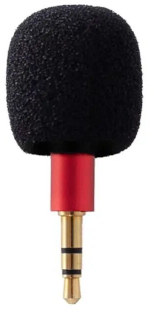- Sampler
- Adding samples via Wooveconnect
- Sampling sounds from the audio input
- Re-sampling the internal synthesizer
- Vocoder
- Working with slices
- Auto-slicing
- Real-time pitch and time warping
- Amen chop tutorial
- Multi-sampled instruments
- Using samples and kits in your songs
- Using single-cycle AKWF samples
- Using Amiga Tracker samples
- Using Teenage Engineering OP-1 / OP-Z sample kits
- Backing up sample kits
- Auto-space reclaimer
- Limitations
- Sampler
- Sampling sounds from the audio input
Sampling sounds from the audio input
Hold the value knob and short-press 14/A6/Sampler button to access the sampler. If needed, repeat this until you are in sampler ("SMPL") mode and not, for example, in resampler mode ("rSMP").
Select the kit you wish to edit or record samples to by holding play and pressing 1-16 to select kit 1-16.
Connect an audio source to the audio input of your Woovebox.
If desired, press the play button to monitor the input. Press play once more to turn off monitoring.
To record a sample, hold write and press 1-16 where you wish to record the sample to. Hold 1-16 for as long as you wish to record.
If you wish to play your sample chromatically (e.g. non just for percussion or one-shot purposes), samples should ideally be recorded as an A-note. In other words, if you wish to sample another instrument, have it play an A. However, if the material is pitched differently by a number of semitones, you can adjust the root note using a slice's pitch (Pich) parameter so that it sounds like an A.
Any recorded audio is automatically normalized (e.g. dynamic range is optimized).
Please note that any uploads or changes are committed only once you switch away from the sampler or to another sampler mode. Until that time, you can completely undo all changes made through the "Undo" in the context menu, which will restore the state of the sampler as it was before you entered it.
Recording line level vs mic level

Ideally, the audio source should output "line level" (a smartphone, table, laptop, keyboard, the audio output of any other synthesizer gear, etc.). However, if you are in a pinch and need to record voice for further processing, your Woovebox can also record faint "mic level" signals as produced by cheap unamplified microphones directly plugged into the input.
To record mic level, in the sampler, hold write and play, then turn the value knob right (for mic level) or left (for line level - default). Please note that trying to record faint mic level signals without switching the input to "Mic LEvL", will result in interference being audible in your recording.
Mic level signal amplification and filtering is performed in the digital domain; a custom-designed digital filtering algorithm removes the interference after recording a slice. As a result, a short pause (dependent on the length of the sample) occurs after recording the sample. You will also notice all LEDs turn off during recording of mic-level sources; all unnecessary sub-systems are powered down to minimize noise and interference.
Sampling mic-level input is mostly meant for getting voice recording/input on the device for further processing (for example via the vocoder, or using the voice recordings as material for pitch and time warping). You may find it less suited for recording ambient or non-voice sounds. A fixed 300Hz - 8000Hz bandpass filter is in place to remove non-voice related frequencies and rumble.
You will typically find it is necessary to speak closely to the mic, almost touching the pop shield - much like a pro-singer of voiceover artist - to get the cleanest possible recording. The less the signal has to be amplified, the less noise will be present in the recording.
Lastly, make sure your chosen mic is able (or TRS fixed-wired) to provide a stereo signal (e.g. has its signal on both the Tip and Ring).
You may also be interested in...
- Vocoder (under Sampler)
Hold the Value knob and short-press 14/A6/Sampler button to access the sampler.
- Uploading new samples (under Wooveconnect)
Please note that just like using the sampler, any uploads or changes are committed only once you switch away from the sampler.
- Restoring sample kits (under Wooveconnect)
In both cases, please note that this will overwrite any previous sample kit in the selected kit number.
- 15. SL.SL Slice Select (under Osc1 and Osc2 oscillator page)
Slice select specifies which sample slice should be selected when a note is played.
- 16. SM.Ho Sample-and-hold (under Osc1 and Osc2 oscillator page)
Sample and-hold allows you to prepare a new oscillator sample every nth master sample.
- Sampler
- Adding samples via Wooveconnect
- Sampling sounds from the audio input
- Re-sampling the internal synthesizer
- Vocoder
- Working with slices
- Auto-slicing
- Real-time pitch and time warping
- Amen chop tutorial
- Multi-sampled instruments
- Using samples and kits in your songs
- Using single-cycle AKWF samples
- Using Amiga Tracker samples
- Using Teenage Engineering OP-1 / OP-Z sample kits
- Backing up sample kits
- Auto-space reclaimer
- Limitations